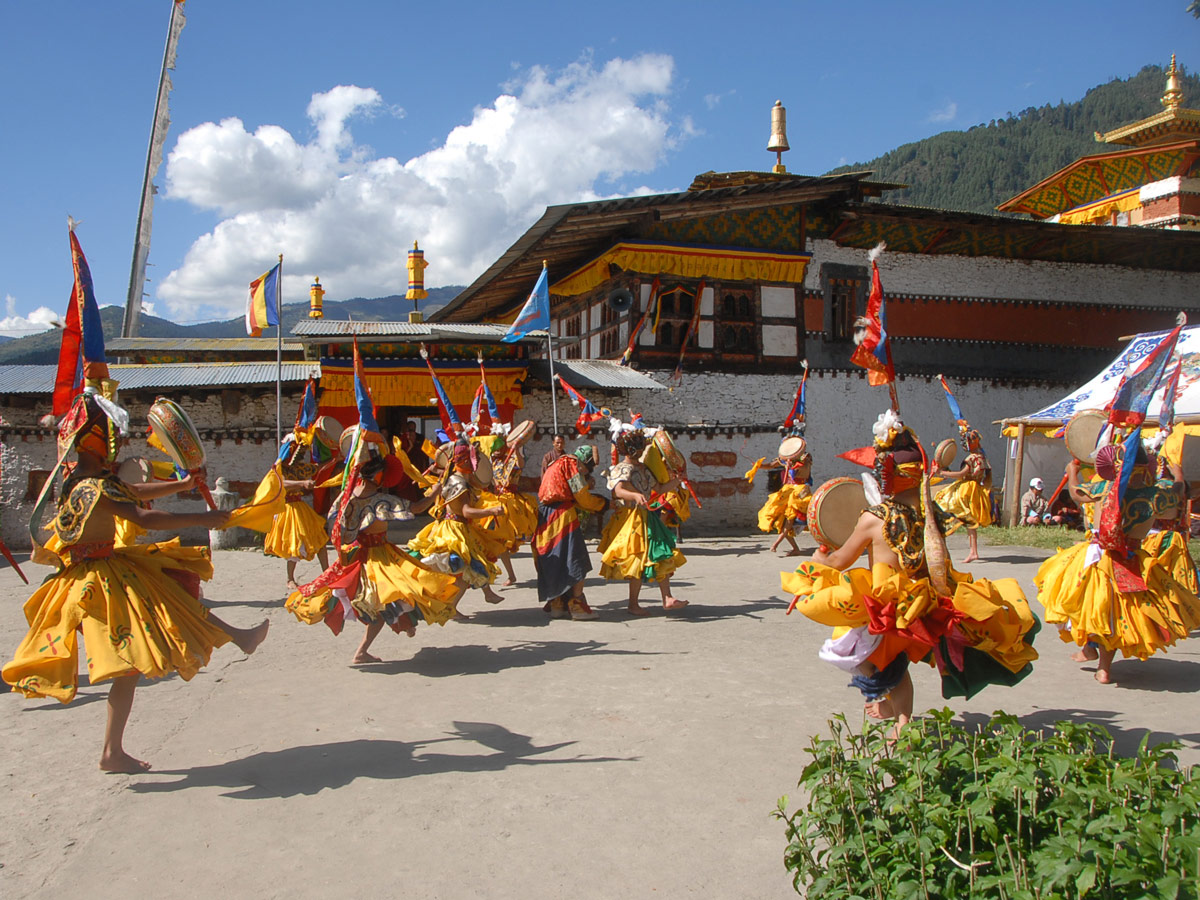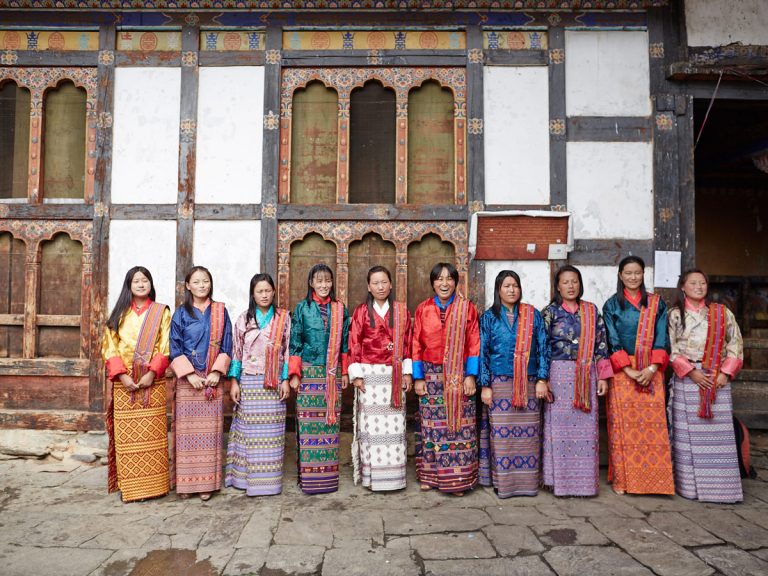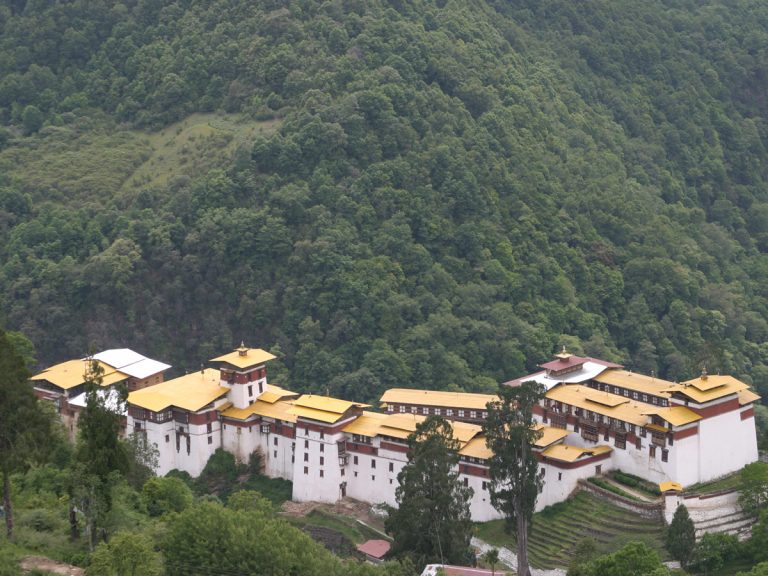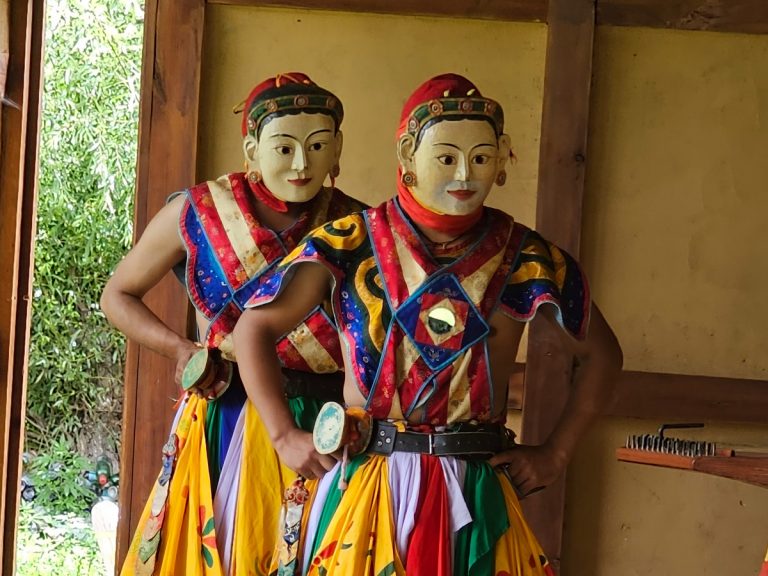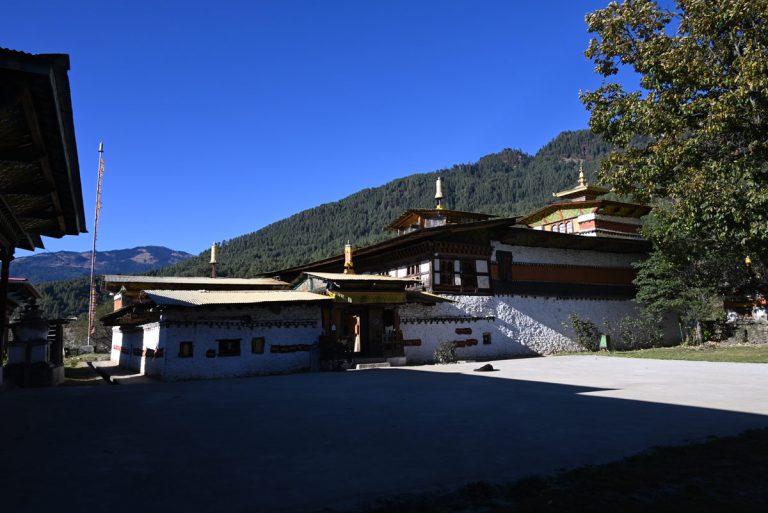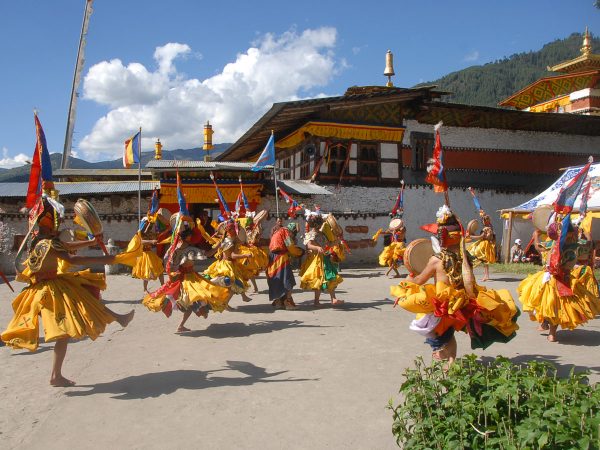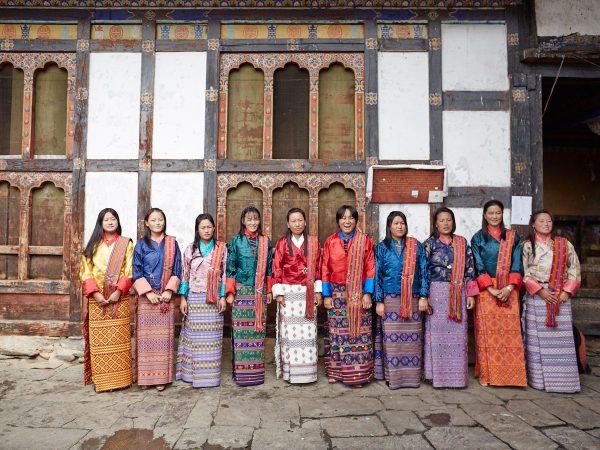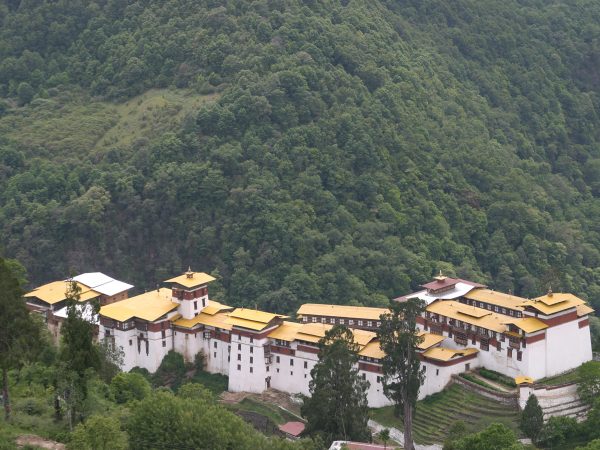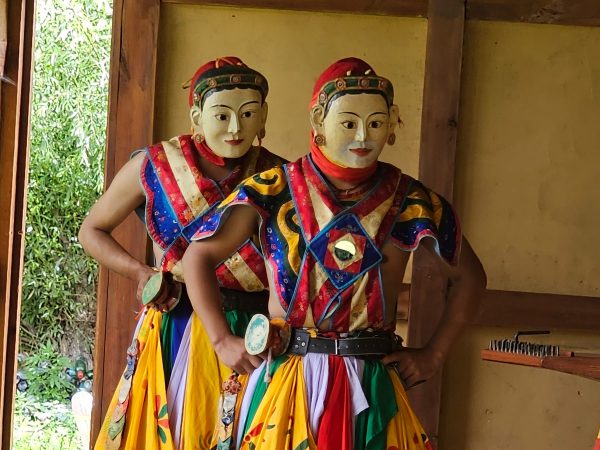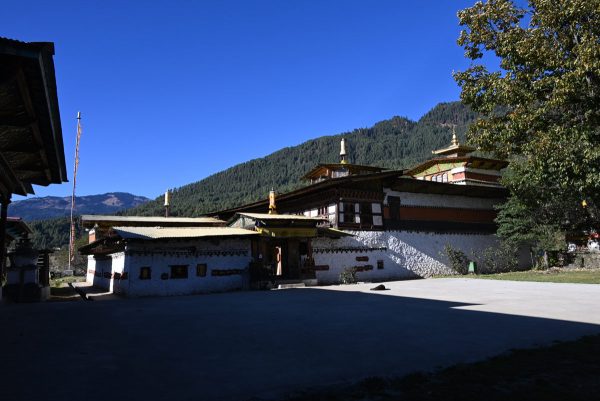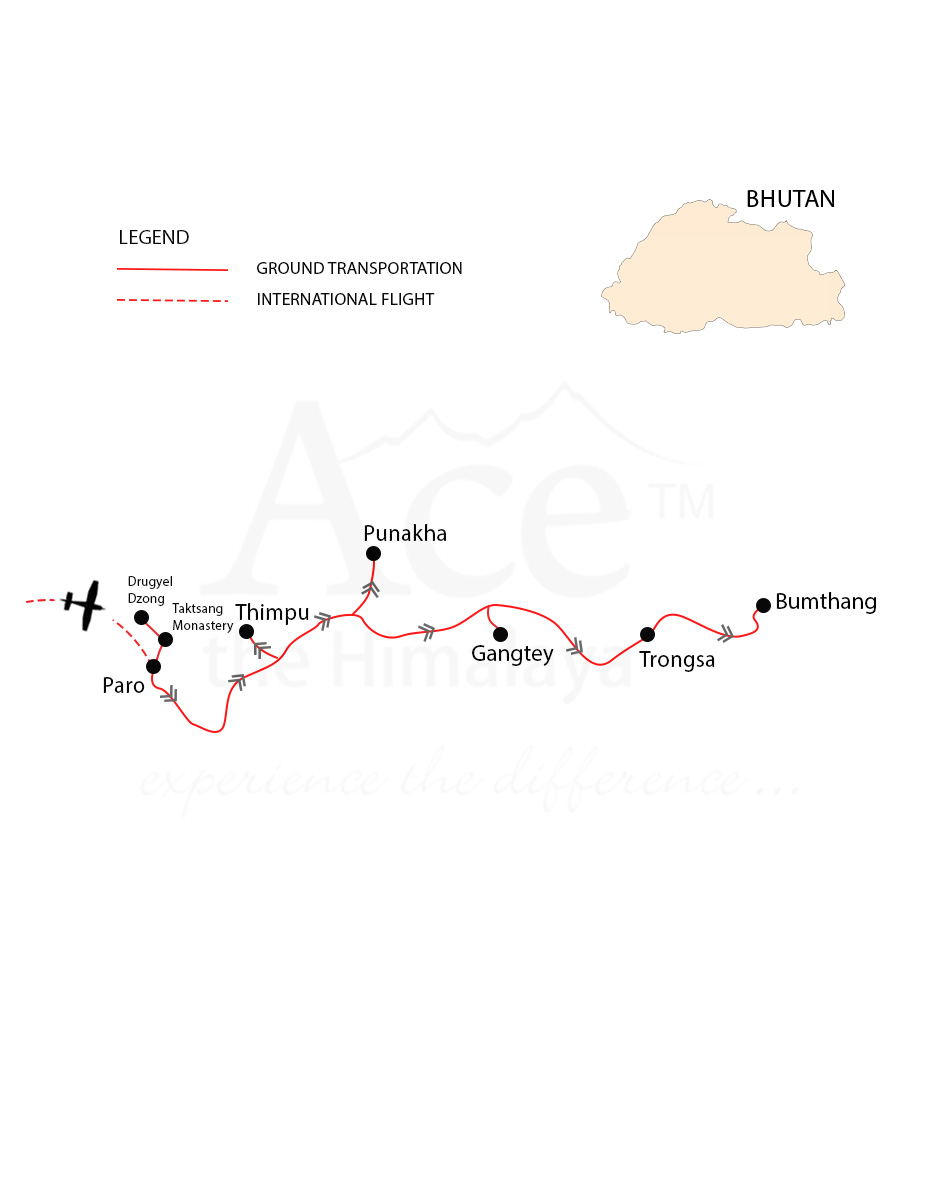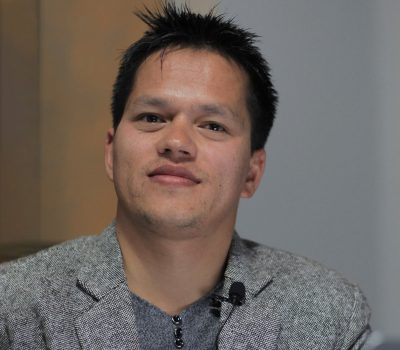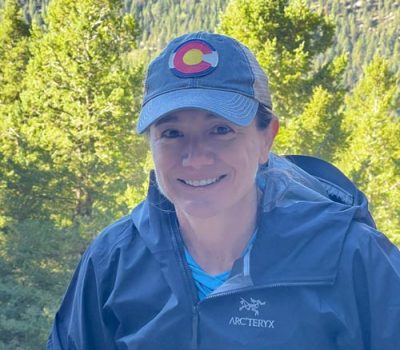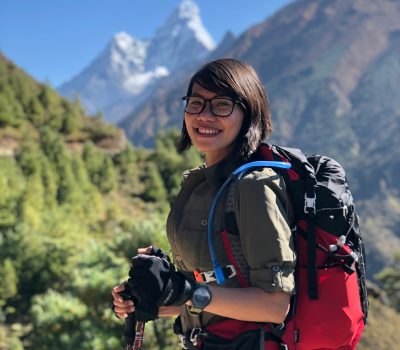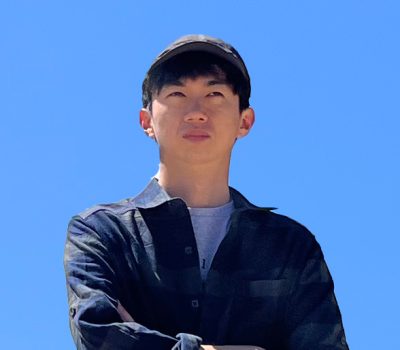Tamshingphala Choepa - 12 Days
The Tamshingphala Choepa Tour offers you a unique opportunity to explore Bhutan’s most iconic and historically rich sites rewarding you with sacred festivals and the vibrant cultural heart of the Land of the Thunder Dragon
Trip Highlights
- Immerse in the unique culture of Bhutan’s iconic destinations: Thimphu, Punakha, Bumthang, Ura, and Paro
- Hike to Bhutan’s most sacred and iconic cliffside monastery, Taktsang Monastery (Tiger’s Nest)
- Explore the historical Dzong of Bhutan
- Encounter the Tamshingphala Choepa activities
- Immerse in the rich culture in the colorful festival celebrations
- Experience sacred mask dances and vibrant costumes reflecting Bhutan’s timeless spiritual heritage
- Soak in the breathtaking Himalayan vistas and tranquil alpine valleys from serene vantage points
- Explore local markets showcasing traditional handcrafted Bhutanese arts and crafts
Trip Overview
The Tamshingphala Choepa Tour offers you an unforgettable opportunity to explore the cultural and spiritual heart of Bhutan, centered around the Tamshingphala Choepa Festival in Bumthang.
The festival is held for three days in the open courtyard of Tamshing Lhakhang, this deeply revered festival honors Terton Pema Lingpa, the great 15th-century treasure discoverer of Bhutan.
During the celebrations, monks and laypeople perform sacred masked dances and ancient purification rituals rooted in the Nyingmapa sect of Mahayana Buddhism.
The vibrant atmosphere is embraced by the whirl of colorful brocades, rhythmic chants, and the lively presence of the Atsara (clown), who entertains and interacts with the crowd.
Beyond the festival, this Bhutan tour also includes visits to Bhutan’s most treasured cultural landmarks in Paro, Thimphu, and Bumthang, offering a rich immersion into Bhutan’s timeless traditions, sacred architecture, and spiritual way of life.
Short Itinerary
September 28 – Arrival at Paro Airport (2250 m/7,382 ft) then transfer to Thimphu (2,330 m/7,644 ft) – 1 to 2 hours drive. Overnight at a 3-star hotel.
September 29 – Sightseeing around Thimphu (2,330 m/7,644 ft). Overnight at a 3-star hotel.
September 30 – Drive to Gangtey/Phobjikha (2,900 m/9,514 ft) from Thimphu – 4 to 5 hours drive. Overnight at a 3-star hotel.
October 01- Drive to Bumthang (2,700 m/8,858 ft) from Gangtey – 4 to 5 hours drive Overnight at a 3-star hotel.
October 02 – Full-day exploration at Bumthang Tamshingphala Choepa culture festival (2,700 m/8,858 ft). Overnight at a 3-star hotel.
October 03 – Tamshingphala Choepa festival and Bumthang sightseeing. Overnight at a 3-star hotel.
October 04 – Bumthang sightseeing and festival activities. Overnight at a 3-star hotel.
October 05 – Drive to Trongsa (2,400 m/7,874 ft) from Bumthang – 2 to 3 hours drive. Overnight at a 3-star hotel.
October 06 – Drive to Punakha (1,200 m/3,937 ft) from Trongsa – 4 to 5 hours drive. Overnight at a 3-star hotel.
October 07 – Drive to Paro (2250 m/7,382 ft) from Punakha – 3 to 4 hours drive. Overnight at a 3-star hotel.
October 08 – Excursion to Taktsang Monastery/ Tigers Nest Monastery (3,120 m/10,232 ft) – 20 minutes’ drive then 5-6 hours hike. Overnight at a 3-star hotel.
October 09 – Transfer to the international airport for your final departure.
Departures & Availability
Please select the fixed departure date from the calendar below to join this festival tour. As there is only one scheduled date aligned with the festival, simply follow the steps to confirm your booking.
Please select the fixed departure date from the calendar below to join this festival tour. As there is only one scheduled date aligned with the festival, simply follow the steps to confirm your booking.
Looking for personalized experience? We organize privately guided journey which is mainly designed to fit your taste and interest. Please fill out the form below to get started.
Price Includes
Accommodation
- Standard government-approved 3-star accommodation (in twin-sharing rooms) for the duration of the tour.
Meals and Drinking Water
- Full-board meals – 11 breakfasts, 11 lunches, 11 dinners, and tea & snacks – for the duration of your stay.
- Unlimited supply of packaged drinking water for the duration of the tour.
Transportation
- All (international and domestic) airport transfers on a tourist vehicle
- Private transportation and a designated driver within Bhutan. SUV vehicles for solo/pairs, Hiace vans for small groups, and Coaster buses for larger groups.
Guide and Staff
- Licensed English-speaking and first-aid experienced Bhutanese tour guides. Additional or assistant guides are provided for groups over 11 or when special support is needed, such as for senior travelers.
- Guided city tour in Paro by private tourist vehicle.
- The required number of local staff and porters to carry your luggage during the trip.
- Wages, accommodation, meals, gear, insurance, and medications for all staff
Permits and Fees
- Bhutan visa fees and processing assistance.
- All route access and monument entry permits and fees.
- Monument and museum entrance fees for all sightseeing locations are detailed in the itinerary.
- Government-mandated Sustainable Development Fee of US$100 per person per night.
Benefits and Takeaways
- Country presentation and tour Briefing on the evening of Day 1 with welcome drinks.
- Cultural afternoon/evening sessions with traditional masks and folk dances (with beverages). [Only for group tours.]
- 1 Ace the Himalaya’s duffel/kit bag, sun hat, and Buff (Neck Gaiter) if your flight originates from Kathmandu, Nepal.
Administrative & Taxes
- All government taxes, official expenses, and tourist service charges.
Price Excludes
- All international airfare, including Druk Air flights and airport departure tax
- Travel insurance, along with high-altitude emergency evacuation coverage.
- Alcoholic drinks and beverages.
- Tips for tour guides, porters, drivers, hotel lobby, and restaurants. (Tipping is expected).
- All items of a personal nature like laundry, gear, shopping, etc.
- Any expenses other than the Price Include section.
Detailed Itinerary
Expand AllDay 01: September 28 - Arrive in Paro and transfer to Thimphu
You’ll fly into Paro International Airport, Bhutan’s only international gateway, with direct flights from cities like Kathmandu, Bangkok, New Delhi, and Dhaka.
For the smoothest and most scenic experience, we recommend flying Kathmandu–Paro–Kathmandu.
It not only makes logistics easier but also allows us to personally greet you with gratitude and offer some thoughtful travel gear or souvenirs, including a duffle bag, sun hat, and neck gaiter, which are yours to keep as part of the journey.
As you soar through the Himalayas, you’ll witness jaw-dropping views of snow-capped giants, including Mount Everest, before landing in the stunning Paro Valley at 2,250 m (7,382 ft).
This fertile region is known for its golden rice fields, apple orchards, and fresh organic produce. Once you land, our airport representative will be there to welcome you with a traditional silk khada, a Bhutanese gesture of good luck and warm hospitality.
After completing arrival formalities, you’ll embark on a scenic one to two-hour drive to Thimphu, Bhutan’s charming capital.
As you journey onward, you’ll travel past lush terraced rice fields, traditional farmhouses, and charming mountain villages, each offering panoramic views of serene valleys.
Arriving in Thimphu, the quiet charm of Bhutanese life welcomes you. With just a few main streets lined with local shops and cozy cafes, the atmosphere is peaceful and unhurried, offering a glimpse into Bhutan’s tranquil way of life.
Day 02: September 29 - Sightseeing around Thimphu
After a warm breakfast, we embark on a deep cultural immersion in Thimphu.
We enjoy sightseeing in and around the Thimphu Valley, beginning with a visit to the National Library, home to a remarkable collection of ancient Buddhist texts and manuscripts.
Afterward, we continue to the Institute for Zorig Chusum commonly known as the Painting School, where students master Bhutan’s 13 traditional arts and crafts.
Our cultural journey then takes us to the Textile Museum and the Folk Heritage Museum, both rewarding visitors with valuable insights into Bhutanese material culture and the everyday livelihood of its people.
We then visit the National Memorial Chorten, where locals gather to practice their devotions and explore Trashichho Dzong, an impressive monastery and fortress that serves as the seat of Bhutan’s government and spiritual leadership.
Later, we browse the Bhutanese Handicrafts Emporium, where a wide array of beautifully hand-woven textiles and traditional crafts are on display.
In the evening, we take time to explore the vibrant Thimphu Bazaar, a lively market filled with local produce, handmade goods, and authentic Bhutanese charm.
Day 03: September 30 - Drive to Gangtey/Phobjikha from Thimphu
After a warm breakfast, we bid farewell to Thimphu and set out for the serene glacial valley of Phobjikha, traveling via the scenic Dochula Pass.
If the weather permits on a clear day, you’ll be rewarded with breathtaking panoramic views of Bhutan’s snow-capped Himalayan ranges.
After descending into the valley, we visit the beautiful Gangtey Monastery, a 17th-century jewel of Bhutanese architecture perched gracefully on the slopes.
This tranquil and remote valley is also the winter home of the endangered, Black-Necked Cranes, whose annual migration is a treasured sight in Bhutan.
We’ll take time to explore Gangtey village and soak in the peaceful beauty and natural splendor of the Phobjikha Valley, a place where nature and spirituality harmoniously coexist.
Day 04: October 01 - Drive to Bumthang from Gangtey
After an early breakfast, we begin our drive to Trongsa across Pele-la pass (3,300 m/10,824 ft).
The pass is marked by a white chorten and many prayer flags. There is a dramatic change in vegetation with alpine forest replaced by high-altitude dwarf bamboo.
En route, we pause at the Chendebji Chorten, an 18th-century stupa built by Lama Shida of Tibet.
The chorten, with its iconic eyes painted on all four sides, is said to cover the remains of an evil spirit subdued at this very site.
Approaching near Trongsa, we are rewarded with distant views of the imposing Trongsa Dzong, one of Bhutan’s most spectacular fortresses, dramatically perched along a ridge.
We then continue eastward toward Bumthang, a 68-kilometer journey (approx. 2-3 hours) over the scenic Yutong La Pass (3,400 m).
The road winds steeply to the pass, then gently descends through coniferous forests into the wide, open Chumey Valley.
Here, we stop at Chumey village, where shops showcase yathra, a vibrant, handwoven woolen textile for which the region is famous.
Crafted with traditional techniques and natural dyes, yathra’s intricate patterns and rich colors make for beautiful souvenirs.
Our journey then continues through forests of blue pine to the Kiki La Pass (2,860 m/9,383 ft), before descending into the breathtaking Choekor Valley, the spiritual heart of Bumthang.
Day 05: October 02 - Full-day exploration at Bumthang Tamshingphala Choepa culture festival
The Bumthang Valley is a serene region that is a blend of four interconnected valleys: Chumey, Choekhor, Tang, and Ura with altitudes ranging from 2,600 m to 4,000 m.
The place is also known as the spiritual heartland of Bhutan which is home to many of the country’s most prominent Buddhist temples and monasteries.
The valley is also the ancestral home of Terton Pema Lingpa, one of Bhutan’s greatest Buddhist saints and treasure revealers.
A key highlight of your visit is Tamshing Monastery, founded in 1501 by Pema Lingpa, and believed to be the incarnation of Guru Rinpoche (Padmasambhava).
The monastery houses some of Bhutan’s most ancient and revered religious artworks, including depictions of the 1,000 Buddhas and 21 Taras commonly known as the female embodiment of enlightened activity.
During your time here, you’ll also have the opportunity to visit a local farmer’s house for refreshments and a glimpse into the traditional rural way of life in the Bumthang Valley.
The day’s highlight is encountering the Tamshingphala Choepa festival, celebrated in the courtyard of this ancient monastery. The area is surrounded by a serene rural scenery and panoramic landscape.
You will enjoy the mesmerizing, masked dances and colorful cultural festivities that pay tribute to centuries-old Buddhist traditions and honor the spiritual legacy of Pema Lingpa.
Day 06: October 03 - Tamshingphala Choepa festival and Bumthang sightseeing.
In the morning, after a warm breakfast, immerse yourself in the vibrant Tamshingphala Choepa Festival, a deeply spiritual celebration held in front of the sacred Tamshing Lhakhang.
You will witness a captivating display of masked dances, ancient rituals, and the joyful gathering of locals, all honoring the great treasure revealer Terton Pema Lingpa.
The festival rewards a rare glimpse into Bhutan’s living Buddhist traditions and the enduring cultural heart of Bumthang.
In the afternoon, we continue with a cultural exploration of the valley, starting with a visit to Jakar Dzong (built in 1667 AD), the imposing “Fortress of the White Bird,” which serves as the seat of district administration and the regional monastic body.
Next, we visit Jambay Lhakhang, one of Bhutan’s oldest and most sacred temples, founded in the 7th century by Tibetan King Songtsen Gampo.
We conclude with a visit to Kurjey Lhakhang, an important pilgrimage site built around a rock bearing the body imprint of Guru Rinpoche (Padmasambhava), who is revered for bringing Buddhism to Bhutan.
The temple is rich in history and spiritual significance, set against the tranquil backdrop of the Bumthang valley.
Day 07: October 04 - Bumthang sightseeing and festival activities
In the morning, we drive to visit the sacred Burning Lake (Mebar Tsho), a revered site discovered by the great Terton Pema Lingpa.
Afterward, we continue to wander around the charming village of Ura, known for its traditional houses, cobbled lanes, and a timeless village atmosphere that rewards a breathtaking glimpse into authentic Bhutanese rural life.
In the afternoon, we return to Tamshing Monastery to partake in the vibrant festivities of the Tamshingphala Choepa Festival.
You will soak in a rich tapestry of masked dances, spiritual rituals, and cultural performances, celebrating Bhutan’s deep-rooted Buddhist heritage in this revered ancient temple.
Day 08: October 05 - Drive to Trongsa from Bumthang
After morning breakfast, we leave Bumthang and take a scenic 2-3 hours drive to Trongsa.
Trongsa literally means “new town”, nestled at the very heart of Bhutan and has long served as a pivotal center in the country’s history.
It was from this strategic location that the first and second kings of Bhutan ruled, making it a significant political and cultural hub.
Even today, the title of Trongsa Penlop (governor of Trongsa) is traditionally held by the crown prince before ascending to the throne, underscoring the town’s enduring political significance.
The highlight of your visit is the majestic Trongsa Dzong, built in 1648. Towering above the Mangde River, this is the largest fortress in Bhutan and one of the most architecturally striking.
With its maze of courtyards, corridors, and temples, the dzong stands as a unique masterpiece of Bhutanese traditional architecture and craftsmanship. Today it remains a symbol of the country’s rich cultural and political heritage.
Day 09: October 06 - Drive to Punakha from Trongsa
After morning breakfast, we retrace our scenic route back to Punakha, journeying once more through Bhutan’s picturesque valleys and lush landscapes.
Upon arrival, we embark on a gentle brisk hike through scenic rice fields to visit Chimi Lhakhang, a temple perched on a small hilltop.
This revered site is dedicated to the great 14th-century yogi Drukpa Kuenley, also known as the “Divine Madman” for his unconventional teachings, legend, and humor.
Chimi Lhakhang is a renowned place for fertility blessings, and many couples visit here in hopes of being blessed with children. The temple’s unique history and rich spiritual atmosphere make this an engaging and memorable experience.
Day 10: October 07 - Drive to Paro from Punakha
After breakfast, we embark on our return journey to Paro, retracing our route through Bhutan’s serene valleys and panoramic landscapes.
In the morning, we drive north to visit the stunning Punakha Dzong, one of Bhutan’s most revered and historically significant fortresses.
Built in 1637, this dzong is strategically situated at the confluence of the Pho Chhu (Father River) and Mo Chhu (Mother River), offering both majestic views and a strong defensive position.
At present, the Punakha dzong serves as the seat of the district administration and judiciary office, and during the winter months, it becomes the official residence of Bhutan’s spiritual leader along with the monks of Thimphu and Punakha.
By late afternoon, we arrive in Paro, where the rest of time is yours to explore. You can either leisurely stroll through the valley or unwind at your hotel.
Day 11: October 08 - Excursion to Taktsang Monastery/ Tigers Nest Monastery
After an early breakfast, we embark on one of Bhutan’s most famous destinations, a scenic hike to the legendary Taktsang Monastery, popularly known as the Tiger’s Nest.
This overall 5-6 hour round-trip hike winds through fragrant pine and rhododendron forests, where fluttering prayer flags and crisp mountain air add to the spiritual ambiance.
Along the way, we stop at a traditional cafeteria, perfectly situated to offer dramatic views of the monastery clinging to the Cliffside, nestled 900 meters above the Paro Valley floor.
Taktsang Monastery, built in the 17th century, is one of Bhutan’s most sacred sites. This sacred site is believed that Guru Padmasambhava (Guru Rinpoche) arrived at this sacred site on the back of a tigress and meditated in a cave here giving rise to its name, Tiger’s Nest (Taktsang Monastery).
Revered as one of the most spiritual places in Bhutan, it has drawn countless eminent saints for meditation over the centuries. Today, it is considered a pilgrimage that all Bhutanese strive to make at least once in their lifetime.
Though partially destroyed by fire in 1998, it has since been restored and remains a revered pilgrimage destination.
Next, we visit Drukgyel Dzong (Victory Fortress), built in 1647, situated 18 km from Paro town. Explore the atmospheric ruins of this historic fortress, which once served as the defensive stronghold against Tibetan invasions.
If weather permits, on clear days, you’ll be rewarded with awe-inspiring views of the sacred Mount Jomolhari from the northern ramparts.
As the day winds down, take a leisurely stroll along Paro’s charming main street. You can browse through multiple shops and cozy cafes, pick up handmade Bhutanese crafts, and soak in the serene beauty of the Land of the Thunder Dragon.
Day 12: October 09 - Transfer to the international airport for your final departure
After morning breakfast at your hotel, your unforgettable Bhutan journey comes to a close as we transfer you to Paro International Airport for your onward flight.
Our friendly representative will assist you with all departure formalities and ensure a smooth check-in process before bidding you with traditional Bhutanese farewell.
Gears and Equipment
All you need to bring for this Tamshingphala Choepa Festival Tour is simply some comfortable clothes; there is no requirement for special equipment on the tour.
However, for your ease, the following gives you a general idea about the personal items you need to manage for the trip. The personal items referred to here are optional and depend upon your choice.
The most important factor to be considered while choosing the types of equipment and your Bag-pack is the time of the year you are traveling.
In a tour, the vehicle transfers all the heavy items and equipment. But the Personal belongings of the clients which are required at any moment like money, water bottle, camera, sunscreen, and toilet paper, etc. should be carried by yourself.
It is therefore advisable that you pack your personal belongings into your daypack.
If you’re flying from Kathmandu, we’ll provide you with a complimentary, windproof duffel bag for the trip. This bag will be carried by porters or mountain transportation like mules, and horses in high-altitude regions and is yours to keep after the trip.
List of Recommended Equipment
- Duffel or Rucksack bag or suitcase (We will provide one complimentary ACE duffel bag for you to keep.)
- Daypack
- Warm wool or synthetic hat that cover your ears (only if you are travelling in the cold season i.e January, February and December)
- Goggles or sunglasses for sunbeam, dust and wind.
- A neck warmer is another piece of gear for extra warmth if you feel you will need it and is for cold season i.e January, February and December.(optional)
- 1 pair warm gloves (This is required if your are travelling in cold season i.e January, February and December).
- T-shirts (2).
- Waterproof (preferably breathable fabric) shell jacket (preferable if you are travelling in rainy season from June to September.)
- 1 pair cotton pants (loose jeans/khakis), 1 pair shorts.
- 2 pairs lightweight long underwear/thermals (if you are traveling in winter January, February and December).
- 2 pairs of liner socks, synthetic or capilene.
- 1 pair light camping shoes or sneakers..
- 1 pair sandals (Optional).
Medicines and First Aid Kits
(Please note our guide will also carry the first aid kit bag during the trek. However we still recommend you to bring your personal first aid kit as well)
- Extra Strength Excedrin for altitude related headaches.
- Ibuprofen for general aches and pains.
- Immodium or Pepto bismol capsules for upset stomach or diarrhea.
- 1 small personal sized first-aid kit with blister treatments such as mole skin, band-aids, some waterproof tape, anti-infection ointments, etc. Your guides will have more extensive medical gear, but you should have the basics for general use.
Other Essentials
- Passport and extra passport photos (4 copies).
- Airline ticket (Please make a copy and leave on at our office in KTM just in case if you need to change the date of your).
- Durable wallet / pouch for travel documents, money & passport.
- Lip balm. At least SPF 20, 2 sticks. A string taped to the stick is helpful, to hang around your neck and some are now being sold with a cord already attached. Handy as it avoids you from having to stop and look for it.
- Sunscreen.
- Toiletry kit. Be sure to include toilet paper stored in a plastic bag, hand wipes, and liquid hand sanitizer, towel, soap, etc.
- 2 bandanas.
This list is only a guide. While you are required to bring everything on this list, there are numerous options, brands, and versions of each piece of equipment. Use your experience and the listed features to find the best gear for you.
FAQs for Tamshingphala Choepa
General
Is this a guaranteed departure for dates listed on the website?
Yes, this trip offers guaranteed departures on the specified dates. You can view and select available departure dates directly from the booking calendar on our website. Each listed date is confirmed to operate. Furthermore, Bhutan trips must be booked at least one month in advance due to travel regulations and logistics.
Additionally, we provide group discounts based on the size of your group. The larger your group, the more substantial the discount, enhancing your travel experience.
Are Bhutan trips available as group departures or only as private journeys?
Normally, most of the Bhutan trips are private departures, meaning they are organized based on preferred dates, an excellent option for families or friends traveling together.
However, if you’re interested in an open-group departure for Bhutan, please inquire with us at the time of booking.
Why travel with Ace the Himalaya?
Ace has a reputation for successfully leading treks with knowledgeable leaders and staff taking care of all your travel needs. We are a certified sustainable travel company that also endorses the idea of giving back to the community by participating in various philanthropic activities. Here are 17 reasons to hike with Ace the Himalaya.
What essential documents do I need to bring with me on tours?
Here are some documents that you will need to carry with you:
- Valid Passport – must be valid for up to 6 months after you return from your tour (Keep a separate photocopy)
- Travel insurance (Keep a separate photocopy)
- Cash and Traveller’s Cheques (Keep numbers and proof of purchase separately)
- Flight tickets
- Emergency contact numbers for T/C’s, banks, insurance, family contacts
Weather and Temperature
What is the best season for this tour?
The best time for Tamshingphala Choepa tours is in September and October when the Tamshing Phala Choepa Festival takes place in Bumthang.
During this period, you can experience vibrant mask dances, spiritual rituals, and the region’s stunning autumn scenery with greater chances of witnessing panoramic landscapes under a clear sky.
What is the weather and temperature like on the tour?
It depends on the season you’re traveling. From September to October, following the monsoon, the temperature gets cooler and allows for a great time to travel.
The average temperature during this season is 20°C. The vehicles and the hotels during the trip will be air-conditioned making your travel very comfortable.
Arrival and Visas
Do I need to obtain VISA for Bhutan?
We will handle the visa procedures for you. The Govt. will sanction the VISA only after the receipt of full payment in advance. The visa fee is included with our tour price. Actual Bhutan VISA will be stamped in your passport on arrival on Paro airport. Without visa clearance number, tourists cannot board the flight or enter the country.
The Ministry of Foreign Affairs forwards a copy of this visa clearance to the concerned Druk Air stations and other entry points; we also fax a copy of the visa clearance document to our clients for their reference. While the actual visa is stamped on arrival, the initial visa clearance is also required at the time of issuing Druk Air Tickets.
All you need is to carry 2 copies of original passport-sized photographs, which are required on arrival in the country. Please e-mail us the clear color copy of the passport for the visa procedures.
Will somebody come to pick me up at the airport upon my arrival?
Yes, our airport representative will be there to greet you at the airport. S/he will be displaying a signboard with your name on it outside the airport terminal. Upon arrival, you will be transferred to your hotel by our tourist vehicle.
Payments and extra costs
How much additional money do I need per day?
It depends on your personal spending habits. In general, all meals, accommodation, and hot drinks are included in the trip price.
You may want to budget around USD 10 to USD 20 per day for additional beverages such as soft drinks, chocolates, or occasional treats.
For personal expenses such as laundry, shopping, bar bills, and tips the amount will vary depending on individual preferences and consumption. These costs are not included in the package and should be planned based on your experience and spending habits.
Can I use credit cards in the places visited in tour?
There are just a few ATM’s in Bhutan for credit cards (Master card / Maestro) & only a few establishments in Bhutan accept credit card payments hence US Dollars (cash or Amex traveler’s cheques) or Euros Cash is suggested and convenient to cover any personal expenses (eg. beverages, laundry, phone bills, tipping, shopping, etc) that the Pax may make in the Kingdom.
1US$ is equivalent to Nu. 84.33 & 1 Euro is equivalent to Nu.95.54 as of today (the day we are writing this text). NU= Ngultrum, the Bhutanese currency.
Who Can Participate?
How fit do I have to be and is this tour for me?
This culture and festive tour is suitable for any kind of travelers ranging from all age groups, no previous experience is required. It’s designed to be accessible and enjoyable for anyone with a general level of health and mobility.
That said, engaging in light physical activity such as aerobics or walking in the weeks can help you feel more comfortable and enhance your overall experience, especially during short hikes or walks included in the itinerary.
Accommodation
What sort of accommodation can I expect in tour?
Accommodation includes a combination of comfortable hotel stays. In cities like Thimphu, Paro, or other regions, you are accommodated in a minimum of 3-star deluxe hotels.
Upgrades to 4-star semi-luxury or 5-star luxury hotels can be arranged upon request, with applicable supplement charges.
What sort of food can I expect in tour?
Most restaurants in Bhutan offer an eclectic mix of Bhutanese, Nepalese, Indian, Chinese, Western, and Continental cuisine, ensuring there’s always plenty to choose from. Local Bhutanese dishes tend to be spicy, similar to Indian cuisine, and provide a rich cultural culinary experience.
Is the water available drinkable? Do I need to bring purifying tablets/filter?
The trip price included the drinking water for the all Bhutan trip. You don’t need to bring any bring purifying tablets/filter or pay for the water.
Will it be possible to get any clothes washed/Laundry ?
Laundry service is easily available at your hotel. Please note that laundry service is not included in the package price.
Can I charge my digital camera or other equipments on my trip?
These facilities will be available in most of the places in your hotel. Remember to bring travel adapters!
Health and Safety
Is Ace the Himalaya's staff insured?
Our company insures all our trekking staff members, including guides, cooks, Sherpa, and porters. Please browse through our legal docment page to view insurance details.
What immunizations will I need?
No vaccinations are compulsory for traveling in Nepal, but we do recommend you are covered for diphtheria & TB, hepatitis A, hepatitis B, *malaria, typhoid, polio and tetanus.
We also recommend:
- A dental check-up prior to traveling
- That you know your blood group in case of emergency
If you have any pre-existing medical conditions which might affect you on tour, you make these known to your tour leader and Ace the Himalaya at the time of your booking.
Practical Matters
What is your cancellation policy?
Notice should be provided 20 days before the trip start date in case of cancellation. The trip can be canceled for justifiable reasons. Once the trip is canceled, a fee of 30% of the trip cost is retained for administrative costs.
However, the trip amount is entirely non-refundable if the cancellation is not made before the 20 days as per our terms and conditions. For submitting a claim to your insurance company after the cancellation, we can assist with documentation such as a receipt of monies paid. Refund will not be provided for unused accommodation in case of trip cancellation caused by personal reasons/sickness/weather.
More information about our cancellation policy can be found here in Terms and Conditions page.
Do I need to tip my guide and porters? How much would that be?
This is a difficult thing to gauge. We have seen everything from USD 20 to USD 1000 per person for guides and porters. Tipping is not required, but a small gesture of thanks to your guides and local porters thanking and appreciating their help. The level of the tip should reflect the level of satisfaction from and personal involvement with your guide.
When do you provide an assistant guide for group tours?
An additional guide is provided for groups of 12 or more participants. However, we may also assign an assistant guide depending on the age group of the participants (e.g., for senior citizens) or if special assistance is required.
Is the government-mandated Sustainable Development Fee (SDF) of US$100 per person per night still applicable?
All SDF charges are included in your package, so you do not need to pay anything extra.
The government-mandated SDF is US$100 per person per night. Children under 12 years old are eligible for a reduced rate of US$50 per child per night, and there is no SDF charged for children under 5 years of age.
Are there any communication facilities during the trip?
Telephones and Internet and international calls are readily available in most of the town for this trip.
Are there any photography restrictions?
You will have many photo opportunities during the trip. Please ask for permission before taking a person’s photo. Photography in, monasteries, shrine rooms of Dzongs, and religious institutions is generally not permitted, but outdoor photography is.
To be sure when visiting such places, you may consult with your guide just to make sure. Carry plenty of films and batteries. Photo shops in Bhutan do not sell equipment or accessories.
Can I add extra days to my trip?
No, because we can’t change your Druk air flight once it is booked.
Is there a minimum and a maximum number for your groups?
We cater to all group sizes, while maintaining the field staff ratio to give you the best quality and experience.
Transportation and flights
Do we book our international flights and Druk air flights?
Yes, you will need to book your international flights (to/from Asia, Europe, or other continents) independently. We are a local agent, and booking international flights through us could result in higher costs.
However, Druk Air and Bhutan Airlines are the only two airlines that operate flights to and from Bhutan (Paro International Airport).
We can assist you with booking Druk Air flights to and from Bhutan and will email you the e-tickets once booked.
Please note:
- Druk Air flights are not included in the trip price.
- Flight fares vary depending on route, season, and forex rates.
We recommend flying from Kathmandu, Nepal, for a seamless transfer and smooth operations. This route also allows us to provide you with convenient service and necessary takeaways such as a duffle bag, sun hat, and neck gaiter which are yours to keep after the trip.
Approximate Druk Air Roundtrip Fares (Economy/Business Class):
- Kathmandu – Paro – Kathmandu: US$500 / US$770
- Bangkok – Paro – Kathmandu: US$850 / US$1,275
- Bangkok – Paro – Bangkok: US$1,000 / US$1,470
- New Delhi – Paro – New Delhi: US$650 / US$1,070
- Kolkata – Paro – Kolkata: US$500 / US$700
- Bangkok – Paro – New Delhi: US$1,050 / US$1,500
- Dubai – Paro – Dubai: US$1,550 / US$2,650
Note: Please note that the airfares fluctuate slightly every day in accordance with the forex rates
How often does Druk Air operate flights, and what is the schedule like for major routes?
Druk Air operates regular flights on several international routes, with daily flights between Kathmandu–Paro–Kathmandu and Bangkok–Paro–Bangkok.
The frequency of flights in other sectors such as Bangkok–Paro–Kathmandu, New Delhi–Paro–New Delhi, Kolkata–Paro–Kolkata, and Dubai–Paro–Dubai varies depending on the season, airport slot availability, and flight clearance at respective international airports.
It’s best to check the updated flight schedule closer to your travel date for accurate availability.
That’s why we recommend flying from Kathmandu, Nepal, for a seamless transfer and smooth operations, as this route offers the most consistent and convenient service for travelers heading to Bhutan.
What mode of transportation do you use?
At Ace the Himalaya, we prioritize comfort, safety, and an authentic local experience. All transportation used on our tours is private and exclusive to our guests, we do not use public transport.
For solo travelers and pairs, we provide private vehicles to ensure a personalized and comfortable journey. Smaller groups typically travel in well-maintained Toyota Hiace or Hyundai minibuses, while larger groups are accommodated in spacious Toyota Coaster buses.
During sightseeing, city tours, and airport transfers, we use reliable tourist vehicles. For more rugged routes and remote Himalayan regions, we deploy sturdy 4WD SUVs as support vehicles to enhance safety and comfort.
This variety of transportation ensures a smooth and enjoyable travel experience across diverse terrains.
Are there any weight restrictions on Druk air flights?
Yes, Druk Air has luggage weight restrictions based on your class of travel. Passengers in Economy Class are allowed up to 30 kg, while those in Business Class can carry up to 40 kg of checked baggage.
If your luggage exceeds the permitted limit, excess baggage charges apply at a rate of USD 5 per kilogram. It’s advisable to pack accordingly to avoid additional costs at the airport.
I want to extend my holiday, any recommendations?
Yes, you can extend your holiday. Ace the Himalaya offers many options and alternatives for your holiday extension. For more information, you can visit our Day trips pages.
Traveler Reviews
These full and frank reviews are from travelers who have traveled with Ace the Himalaya previously. The reviews and experiences shown here are from reputable travel websites like TripAdvisor & Google.
 Google Reviews
Google Reviews
What makes this trip different ?
Our CSI with Sambhav Nepal
- Ace the Himalaya believes in giving back to the communities that surround and support tourism in Nepal. Ace provides logistical support and, if needed, cash donations to the projects of Sambhav Nepal (a local NGO).
- Sambhav Nepal and Ace work together to plan volunteer programs that will bring in foreign volunteers and make use of their enthusiasm, time, and talents in a variety of projects.
Sustainability and Responsible Tourism
- Of the few Travelife Certified companies in Nepal, Ace the Himalaya is one. We respect the procedures for sustainable tourism. Our excursions are socially and environmentally conscious, leaving the lowest possible impact in the Himalayas.
- About 80% of Ace the Himalaya’s staff members are natives of the regions where our trips are organized. It is one of our sustainable and responsible efforts to help local communities, support small businesses, and promote regional culture and way of life.
